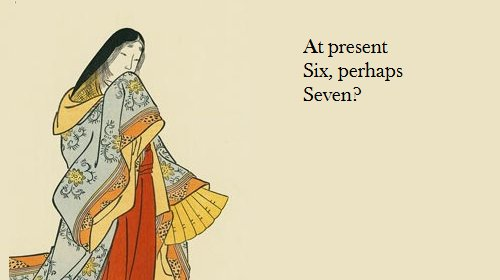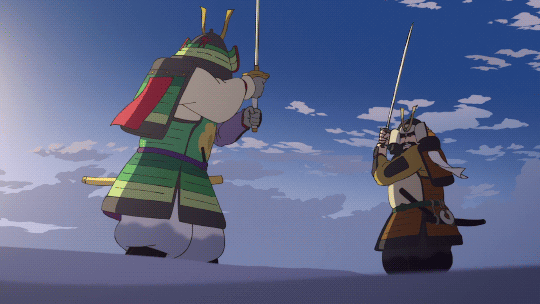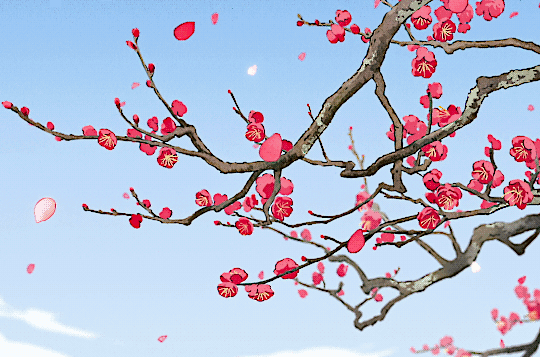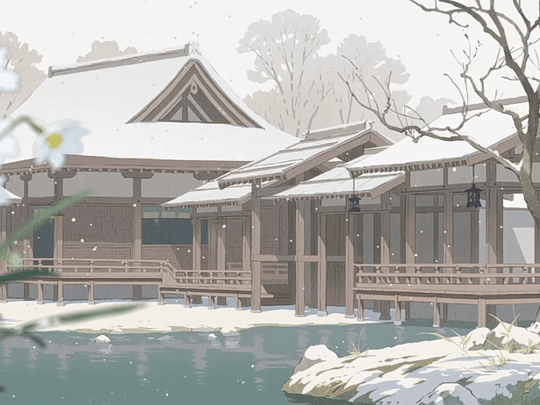originally posted at https://canmom.tumblr.com/post/675159...
Hi friends, it’s Thursday! You know what that means. Unless you followed me just this week in which case hi, welcome, let me move this stack of cels - yes, it’s that night where I show animation on Twitch!

One of the very first people we covered on Animation Night was Naoko Yamada - KyoAni’s star director, renowned for her subtle, beautiful direction taking after the language of live action film. (c.f. Animation Night 13, Animation Night 51). She first caught attention on K-On!, where her storyboards stood out for their clever perspective and extraordinary care in portraying gesture and body language; she soon rose to lead the incredible character animation talent of one of the most beloved animation studios in the world, resulting in incredibly affecting stories like A Silent Voice and elegantly painful ones like Liz and the Blue Bird. At the same time, she played a large role in teaching her fellow animators the art, and generally it seemed that you could say, “Naoko Yamada’s in her KyoAni, all is right with the world”.
Except… that isn’t true anymore. KyoAni is still recovering from the horrific arson attack of 2019 and will never be the same as it once was, and in that context, late last year we got the surprise news that Yamada had left KyoAni to direct a show at Science! Saru, the studio founded by Masaaki Yuasa (Animation Night 12, Animation Night 28). Naturally this set everyone in the sphere who pay attention to such things pretty abuzz - you might read kVin’s article from the time, in which he was eager to see how Yamada’s style would work at the famously experimental studio… but also criticised the management of Science Saru, whose staff were in a tunnel of overwork trying to keep up with far too many projects. (Tragic, since they were once a pretty bold experiment in running studio better).
But all the same, the show got made. And, by all accounts, it was fantastic. So, in keeping with the new program of ‘watch an entire cour of anime in one night’, tonight… we’re going to check it out! (Why the marathon approach? I think it’s a good fit, but more on that anon…)

What’s the deal with this one, then? Well, Heike Monogatari (The Heike Story) is a famous Japanese epic dating back to the end of the Heian period (794-1185). If you don’t have an interest in Japanese history for some reason, you may know the Heian period from a certain meme…




As this implies, it’s known for being a peaceful era in which poetry was a big deal. A huge amount of literature comes from this time, much of the Japanese-language portion written by women because the men were more likely to speak Chinese.
Going back to the time I wrote a gigantic animation night post about the rise of the samurai class, it was also a period of population decline, in which the former criminals who had defended the Imperial court against a series of rebellions were awarded with power and status, and they became the earliest form of military houses and tax-collecting landlords who fought through horse archery. This became further cemented after famines in the 1000s, which the government answered by formalising the feudal tax-collecting estates, becoming the first samurai in the familiar sense.
Among these various noble houses in the imperial court, the most powerful were the Taira, Fujiwara, Tachibana and the Minamoto. For most of the Heian period, fighting would involve fairly ritualised skirmishes, in which small groups of riders or individuals would be sure to announce their pedigree before getting to it… but this came to a bloody end in the 1180s, with a five year civil war between the Taira (平) and the Minamoto (源) clans. This is the subject of the Heike story - Heike (平家) is a compound word which therefore means it takes on’yomi, but simply means ‘Taira family’.

The Heike story does not have just one author, but rather is an oral tradition first carried by mostly-blind, biwa-playing travelling performers known as biwa hōshi who would perform it in a ritual way which established their own presence in Japanese society. As such, there is not just one version of it, but there is a predominant version of it compiled by the blind monk Kakuichi in 1371. As you can probably imagine for a national epic, it’s a huge sprawling story, and its precise interpretation is a matter of debate. Wikipedia names two major readings:
At one level, the Tale is an account of martial heroism – of courage, cruelty, power, glory, sacrifice and sorrow.[4] Those who emphasise this aspect of the story point to its glorification of the heroic spirit, its avoidance of the realistic brutality and squalor of war, and its aestheticisation of death:[5] a classic instance of the latter is the comparison of the drowned samurai in the final battle to a maple-leaf brocade upon the waves.[6]
Others, while still accepting the importance of the military episodes and of heroic figures like Yoshitsune, would emphasise instead the Tale’s immersion in Buddhist thought, and its themes of duty, Dharma, and fate.[7] Announced at the very beginning is the Buddhist law of transience and impermanence,[8] specifically in the form of the fleeting nature of fortune, an analog of sic transit gloria mundi. The theme of impermanence (mujō) is captured in the famous opening passage: [click through to read it]
It sounds like a work that would be nigh impossible to adapt - but around this time, Masaaki Yuasa is directing another period piece about a musician in ‘darling of everyone lucky enough to see it at a festival’ Inu-Oh. That’s the context for this collaboration. Still, it’s a hefty task.
Yamada’s approach was to make the emotional core of the story an orphaned girl called Biwa, after the instrument she plays and clearly a synecdoche of the biwa hōshi. Her adaptation is self-reflective about the act of retelling and the meanings imparted, with itself as a case in point, as Matteo Watzky relates in a great deal of depth here…
(…) In the hands of Yamada and writer Reiko Yoshida, however, the tale is humanized in a new and important way; namely, in the sense that it is first and foremost a story about “real people”. Remarkably, there are no true villains: even the mythically evil Kiyomori – the head of the Heike and the primary instigator of the conflict – is presented as a deeply imperfect human being. More broadly, while the members of the cast are generally defined by traditional virtues and vices, the show is at pains to depict them as living people in their own right. To that end, emperors and servants alike exist in an unvarnished state, irreducibly unique in their personalities and mannerisms, defined equally by their solemnity and silliness, their cruelty and compassion, their fearfulness and foolishness.
Suffice to say, this sense of dramatic realism cannot be conflated with a false claim to historical reality. Indeed, the very first episode foregrounds the self-evidently artificial and anti-illusory nature of animation by having one of the “real people” ironize over their own existence as an animated character: “Those outside our clan are not real people,” says the hand-drawn image of a person whose very words is an artistic construct. This overt subversion of immersion – which discloses the anime’s (ir)reality as animation by dispelling its claim to naive realism, is an open demonstration of Heike Monogatari’s commitment to the truth of animation as a creative construct. At the same time, the fact that the medium of animation enables the creation of real images, including (un)realistic images of (un)real people, enables it to critically engage in, reflect on and intervene in reality. By capturing the inherently imperfect reality of human coexistence, Heike Monogatari eschews naive idealism in favor of a decidedly anti-humanistic view of political history. In other words, it harbors no illusions to the inevitable rise of an enlightened humanity. Furthermore, the feminist perspective that always permeates Yamada’s work is notably complexified by the politics of the setting, with the prominent threat of (sexual) violence a constant factor and women’s resistance to the ruling patriarchy generally reduced to active forms of passivity, i.e. the deliberately ambiguous act of “exiting society” through either religious seclusion or suicide.

(here’s a swordfight to assure you that it’s not all the sort of thing you can only say in long paragraphs :p … ok now, skipping forward a bit)
Given this, the anime can be seen to use Biwa’s art of storytelling as a self-reflective vehicle for its own cinematic mediation of the tale. Of course, there is a problem with this: Biwa is not a real historical figure, past or present. In fact, as a “real person”, she is but an image of animation itself. But does this fact signal that she cannot tell the truth, or that her story cannot be a true part of history? Surely not. For Biwa’s story to be false, it would have to paint a false picture of reality. But, as noted, there is nothing deceptive about Heike Monogatari’s reconstruction of its source material. Rather, the show takes inspiration from history, what is known of the original tale and its tellers, in order to spin a mythopoetic yarn about these very things. It recreates history by transforming it into a story – but it also uses that story to show how history itself is created through storytelling. In other words, what Heike Monogatari shows us is not factually true, but the self-evident nature of that fact itself reveals a great deal about the construction, transmission and reception of historical truth.
This approach - making it very much Naoko Yamada’s take on the Heike Monogatari - seems to have paid off handsomely, and I’ve generally seen it receive nothing but praise.
On top of that, it’s also just… incredibly beautiful to look at - a nice demonstration that digital compositing is not in fact the devil and can be put to pretty good effect if you know what you’re doing. The pale blue palette that suffuses it suitably brings to mind scrolls from the Heian period, the character designs are readable and varied with the right balance of complexity to support expressive animation… inevitably, people compare it to KyoAni, and say something like “well the guys at science saru are not quite on that level of godliness but they’re pretty damn good” which honestly feels a little unfair, because they really are damn good. And, of course, the backgrounds lovely, full of beautiful palaces and falling snow cherry blossoms that might inspire you to write a poem.


So, why the marathon approach? Well because of various circumstances intervening I haven’t gotten around to watching this all the way through yet… but also the complexity of the story and all the characters and moving parts strikes me as something that would benefit from being seen in one go, with memories fresh.
So, as such, please join me around 7pm UK time (maybe a little later if circumstances intervene, i’ll post when it starts) to witness, along with Biwa, the tragic fall of the arrogant Heike… and all things are impermanent, so don’t miss it! see you then at twitch.tv/canmom
Comments